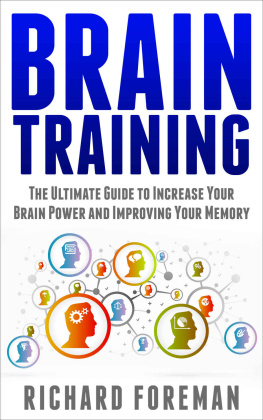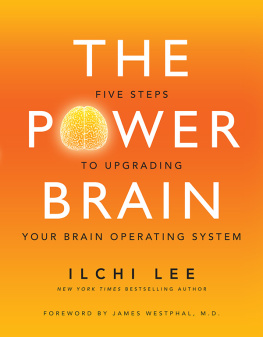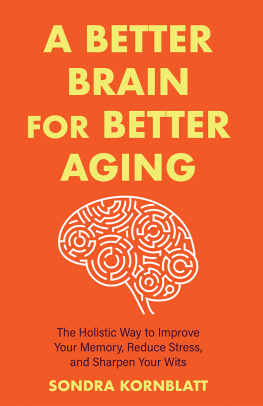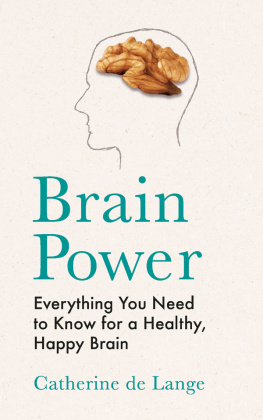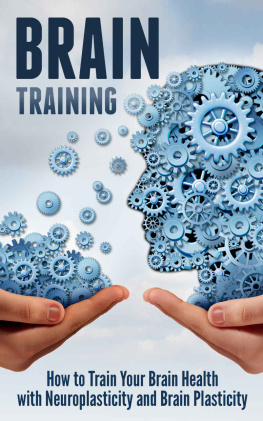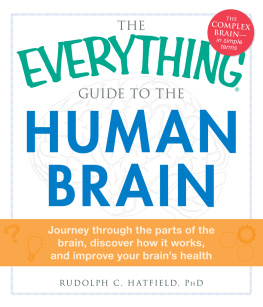BrainTraining:The Ultimate Guide to Increase Your Brain Power andImproving Your Memory (Brain exercise,Concentration, Neuroplasticity, Mental Clarity, Brain Plasticity)
RichardForeman
PUBLISHEDBY:
RichardForeman
Copyright 201
Visitour website to get more books information: justhappyforever.com
All rights reserved.
No part of this publication may becopied, reproduced in any format, by any means, electronic or otherwise,without prior consent from the copyright owner and publisher of this book.
Disclaimer
The information contained in thisebook is for general information purposes only. The information is provided bythe authors and while we endeavor to keep the information up to date andcorrect, we make no representations or warranties of any kind, express orimplied, about the completeness, accuracy, reliability, suitability oravailability with respect to the ebook or the information, products, services,or related graphics contained in the ebook for any purpose. Any reliance youplace on such information is therefore strictly at your own risk.
WAIT! Before youcontinue
Justto say thank you for purchasing this book, I want to give you a 100% FREE GIFT (valued at$5.99) : 10Hot Tips for Eating Right&Losing Weight Fast .
Youwill get the tips for eating right and losing weight fast to make you health.
Click here to access your Freegift
Tableof Contents
Introduction
Braintraining has been in the news for the past couple of decades and, although theexperts are still conducting research into what extent training your brain canward off Alzheimers and other age-related illnesses, there has largely been apositive link made between staying mentally alert and brain training. Peopleare often confused about brain training and exactly what it means. Many presumethat they need to purchase expensive tools and certainly the manufacturers ofsuch tools are happy for you to think that way because they want you topurchase their goods.
Theymay use complicated rhetoric to impress you. The truth is that there are plentyof ways that you can train your brain without spending a fortune; languagelearning is just one of them. What you need to do is to work out what you wantto improve in your life. If you need to improve your memory, there are methodsthat you can use to do so; the same goes for concentration, critical thinkingand reasoning, as well as increasing the speed at which you can complete tasks.
Overthe last two thousand years, our understanding of how the human body works, whyit works and how to fix it when it stops working has come a long way. Much ofthis understanding has come on in great leaps in the last hundred or so years.Medical science and the more recent branches of medicine, like psychology, haveall contributed to a whole new understanding of how our bodies work and the wayin which our internal organs function. Until recently, however, one organ andits functions remained elusive; the brain.
Ashumans, we've used these amazing super-computers to get us to the moon andbeyond but back here on earth just how those organs functioned was not fullyunderstood. Advances in scanning technology have begun to change all that,although it's still very early days as far as understanding the complexities ofthe human brain go. One surprising find in recent years has been the discoveryof a new concept known as neuroplasticity - in layman's terms the plasticnature of the brain!
Untildetailed scanning techniques became available certain assumptions were madeabout the way in which the brain forms and functions. It was believed that atbirth our brains were essentially plastic in nature and not fully developed.Through a process of learning throughout our early years links, pathways andgray matter were believed to gradually develop until the brain set in a solidform in our late teens and early twenties. Beyond this, growth, development andthe creation of new neurons and links in the brain was believed to beimpossible. It was also believed that by our mid-forties onwards an inevitabledecline in brain function and structure began to occur. MRI scanning and thenew concept of neuroplasticity blew most of these theories well and truly outof the water!
Thebrain's pathways are created through learning and these pathways becomere-enforced the more we use them. Most people, once they've reached a certainage, stop learning and rely on their existing knowledge. This is not say westop completely but we (quite naturally) take the easiest routes in ourthinking those which build in our earlier years and which are tried, testedand easy to use! In fact, through studying brains damaged by stroke oraccidents, it's now been discovered that broken while pathways may beabandoned this doesn't mean that new ones cannot be built.
Avery good analogy for this process is to imagine that you are traveling fromone city to another along a familiar highway. It's a journey you know so wellyou don't have to think for a moment about the route. One day you find thehighway closed a bridge is out and will be out for many months to come. Inorder to reach your destination you are forced to take side roads, back roadsand minor roads through the back woods. These routes are difficult to drive,rarely used and at first you find yourself lost, turning back, tryingalternative routes and taking far longer to reach your destination. However,after a few months you begin to become familiar with the new route, you learnto drive in a new way, you learn a new route and you're soon finding your wayto your destination (more or less) as effortlessly as before.
Inessence, this is how the brain's ability to create new pathways works. Whilethis sounds simple enough, it has some amazing potential; the structure of ourbrain affects our every thought and action. We act in certain ways because ofthis structure; by building new, real, physical structures in our brain we canchange the way we behave. This means that we can learn to react differently tosituations (more positively or constructively) and can create potential forgreater success in life or build on existing success in new ways.
Inaddition to creating whole new structures in our brain, it's also possible togrow new neurons and increase the size of certain parts of our brain. As weage, this can be increasingly important, but for anybody who wishes to improvetheir mental energy, focus, clarity and ability to solve problems trainingyour brain is an essential skill to learn. In this book we'll take a look atthe top tips for improving mental energy and sharpening your mind and abilitiesto think and rationalize clearly.
Scanninghas shown that the brain's ability to grow, change and even produce new neuronsand create new pathways does not end in our youth. Nor is the process ofdecline inevitable or irreversible. The brain's pathways are createdthrough learning and these pathways become re-enforced the more we usethem. Most people, once they've reached a certain age, stop learning andrely on their existing knowledge. This is not say we stop completely butwe (quite naturally) take the easiest routes in our thinking those whichbuild in our earlier years and which are tried, tested and easy to use! In fact, through studying brains damaged by stroke or accidents, it's now beendiscovered that broken while pathways may be abandoned this doesn't mean thatnew ones cannot be built.
BrainBuilding Sounds Hard
Humansare designed to build their brains neuroplasticity is a new concept, but it'san age-old skill. Without our ability to learn, humanity would not havesurvived as long as it has. This is where the good news lies for anybodywho feels that their own mental abilities are set for life. Learning newskills, developing new structures in the brain and learning to behave in newways are what your brain is built for; it will take to the process naturallyand will be your own biggest ally! Some of the tips in this book aresurprisingly simple and will be easy to master. Some are harder and willtake time, but will, ultimately, help to build a stronger mind and improve yourmental energy and the sharpness of your mind.

